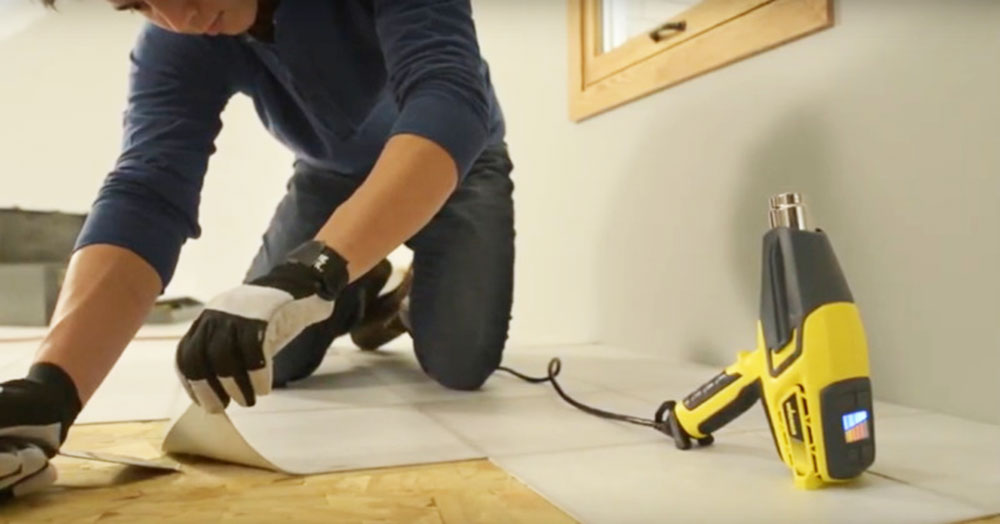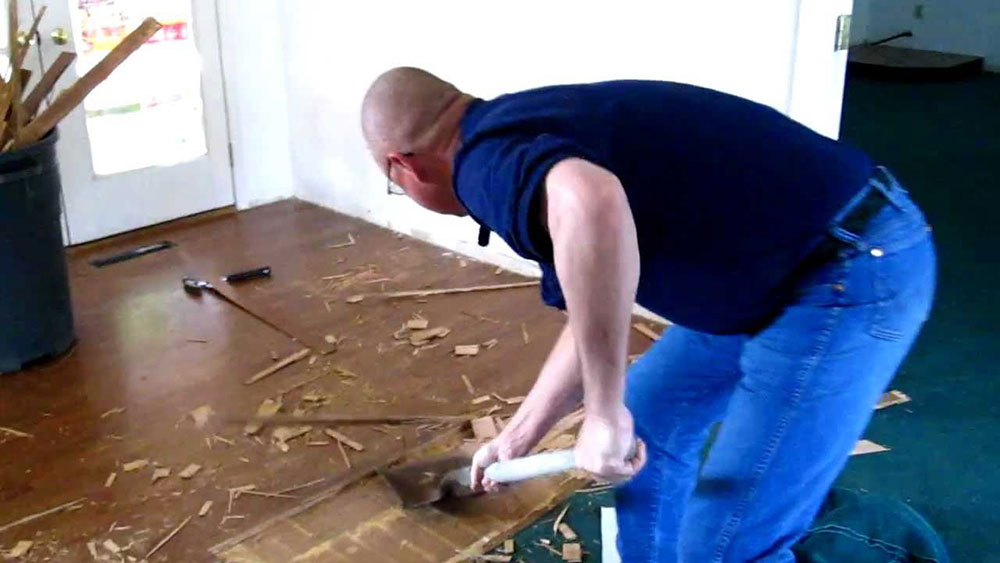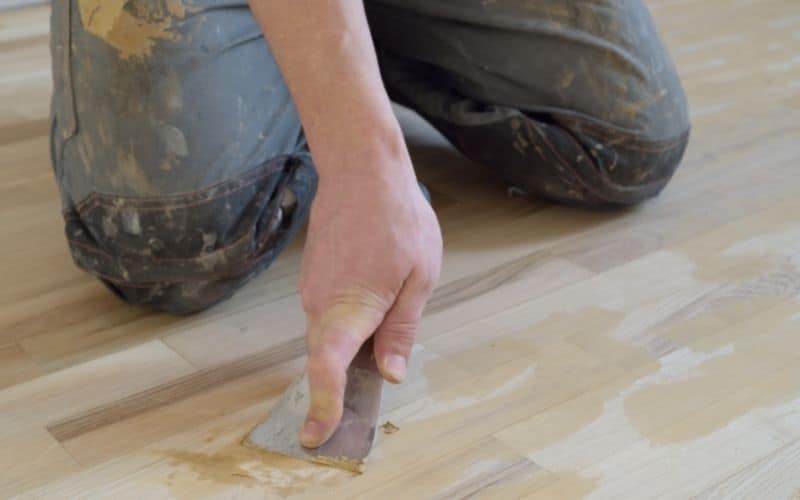Removing glue from laminate floors can be a challenging and sometimes frustrating task, but it’s an essential one to maintain the beauty and functionality of your flooring. Whether you are dealing with leftover adhesive from installation, spilled glue, or sticky residue from tape or stickers, knowing the right techniques and tools can make all the difference. Here’s a detailed guide to help you navigate the process of laminate floor glue removal efficiently and safely.
Understanding the Nature of Glue on Laminate Floors
Types of Glue and Adhesive
Glue on laminate floors can come from various sources such as installation adhesive, spills from crafts or repairs, or residue left by stickers and tape. Different types of glue have distinct properties, which can affect how easily they can be removed. Common types include white glue, super glue, construction adhesive, and tape residue.
Each type of glue reacts differently to removal methods. For example, white glue may soften with water, while super glue requires acetone for effective removal. Understanding the type of adhesive you’re dealing with is crucial for selecting the right removal technique.
Impact on Laminate Flooring
Glue on laminate flooring can cause several issues. It can create unsightly spots that detract from the floor’s appearance and potentially damage the surface if not removed properly. Adhesive residues can also attract dirt and grime, leading to long-term maintenance problems.
If not handled correctly, removing glue can damage the laminate finish. It’s essential to use methods and materials that are safe for laminate to avoid scratches, discoloration, or weakening of the laminate layers.
Assessing the Situation
Before starting the glue removal process, assess the extent and type of glue involved. Small spots of glue can often be handled with simple household items, while larger or more stubborn adhesive residues may require specialized products.
Inspect the affected area to determine the best approach. If possible, test your chosen removal method on a small, inconspicuous area to ensure it doesn’t damage the laminate.

Safety Considerations
Removing glue can involve the use of chemicals or tools that require caution. Ensure good ventilation in the room to avoid inhaling fumes from cleaning agents. Wear gloves to protect your hands from harsh chemicals and abrasive tools.
Be aware of the potential for slips and falls on wet floors during the cleaning process. Keep children and pets away from the area until the glue removal and cleaning are complete.
Preparation and Tools Needed
Gather the necessary tools before starting the glue removal process. Common items include a plastic scraper, acetone or nail polish remover, a soft cloth, warm soapy water, and a gentle laminate floor cleaner. Avoid using metal scrapers or abrasive materials that can scratch the laminate.
Having all tools ready ensures a smoother and more efficient process, minimizing the risk of damage to your floors. Consider having a small vacuum or broom handy to clean up any debris as you work.
Environmental and Health Concerns
Many glue removal products contain chemicals that can be harmful to the environment and your health. Opt for eco-friendly products whenever possible and follow the disposal instructions for any chemical agents used. Proper ventilation and protective gear can mitigate health risks.
Consider using natural alternatives, such as vinegar or baking soda, for a more environmentally friendly approach. These options can be effective for certain types of glue and are safer for your health and the environment.
Methods for Removing Glue from Laminate Floors
Using Warm Soapy Water
For minor glue spots, warm soapy water can be an effective and gentle solution. Mix a few drops of dish soap with warm water and soak a soft cloth in the solution. Place the cloth over the glue spot and let it sit for a few minutes to soften the adhesive.
Gently rub the area with the cloth, applying slight pressure to lift the glue. Avoid using excessive force, which can damage the laminate surface. Rinse the area with clean water and dry it thoroughly to prevent any water damage.
Applying Acetone or Nail Polish Remover
Acetone or nail polish remover can be effective for tougher glue stains, such as super glue. Dampen a cotton ball or soft cloth with acetone and apply it to the glue spot. Let it sit for a few minutes to break down the adhesive.
Gently scrape the softened glue with a plastic scraper, being careful not to scratch the laminate. Wipe away any residue with a clean cloth and rinse the area with water. Ensure thorough ventilation when using acetone to avoid inhaling fumes.
Utilizing Vinegar
Vinegar is a natural and safe alternative for glue removal. It works well on certain types of adhesives without harming the laminate. Soak a cloth in white vinegar and place it over the glue spot. Allow it to sit for a few minutes to loosen the adhesive.
Rub the area gently with the cloth to remove the glue. For stubborn spots, repeat the process or use a plastic scraper to aid in removal. Rinse the area with water and dry it completely to prevent any vinegar residue from damaging the floor.
Using a Plastic Scraper
A plastic scraper can be a valuable tool for removing glue without damaging the laminate. Gently slide the scraper under the edge of the glue spot and lift it away from the surface. Be patient and work slowly to avoid scratching the floor.
For best results, soften the glue first with warm soapy water, vinegar, or acetone. This makes it easier to scrape off without excessive force. Always use a plastic scraper, as metal ones can easily damage the laminate.
Commercial Glue Removers
Several commercial products are designed specifically for removing glue and adhesive from surfaces. These products can be highly effective but should be used with caution. Read and follow the manufacturer’s instructions carefully.
Test the product on a small, inconspicuous area first to ensure it doesn’t damage the laminate. Apply the remover to the glue spot and let it sit for the recommended time. Use a plastic scraper or soft cloth to remove the softened glue and clean the area thoroughly.
Combining Methods
In some cases, combining different methods can yield the best results. Start with the gentlest approach, such as warm soapy water or vinegar, and progress to stronger methods if needed. For stubborn glue spots, using acetone followed by a plastic scraper can be effective.
Monitor the condition of the laminate throughout the process to ensure no damage occurs. Adjust your approach as needed to safely and effectively remove the glue.
Cleaning and Restoring the Laminate Finish
Removing Residue
After the glue has been removed, it’s important to clean any remaining residue. Use a gentle laminate floor cleaner and a soft cloth to wipe down the affected area. This helps to remove any leftover adhesive or cleaning agents.
Rinse the area with clean water to ensure all residue is removed. Dry the floor thoroughly with a soft cloth to prevent water damage and ensure a clean, streak-free finish.
Polishing the Surface
Polishing the laminate surface can help restore its shine and smoothness after glue removal. Use a laminate floor polish or a solution recommended by the flooring manufacturer. Apply the polish according to the instructions, using a soft cloth or mop.
Work in small sections to ensure even coverage and avoid streaks. Allow the polish to dry completely before walking on the floor or replacing furniture. This helps to protect the laminate and maintain its appearance.
Addressing Scratches
If the glue removal process has left scratches on the laminate, these can often be repaired with a laminate repair kit. These kits typically include a filler material that matches the color of your flooring and a putty knife for application.
Clean the scratched area thoroughly and apply the filler according to the instructions. Smooth the surface with the putty knife and allow it to dry completely. This helps to restore the appearance of the laminate and prevent further damage.
Preventing Future Glue Issues
To prevent future glue issues, take precautions when using adhesives or sticky materials near laminate floors. Use drop cloths or protective coverings when working on projects that involve glue. Clean up spills immediately to prevent them from drying and becoming more difficult to remove.
Educate family members and guests about the importance of keeping glue and sticky substances away from the laminate. This helps to protect your flooring and reduce the need for future glue removal.
Regular Maintenance
Regular maintenance can help keep your laminate floors looking their best and prevent issues with glue and other residues. Sweep or vacuum the floors regularly to remove dirt and debris that can cause scratches. Use a damp mop with a gentle cleaner to maintain the finish.
Avoid using harsh chemicals or abrasive tools that can damage the laminate. By keeping up with regular cleaning and maintenance, you can extend the life of your laminate floors and keep them looking beautiful.
Professional Help
In cases where glue removal is particularly challenging or the laminate has been damaged, it may be best to seek professional help. Flooring specialists have the tools and expertise to safely remove glue and restore the appearance of your floors.
A professional can also provide advice on how to care for your laminate flooring and prevent future issues. This can save you time and effort and ensure the best possible results.
Tips for Effective Glue Removal
Patience and Persistence
Removing glue from laminate floors requires patience and persistence. It’s important to work slowly and carefully to avoid damaging the surface. Rushing the process can lead to scratches or other damage that may be difficult to repair.
Take your time and be prepared to repeat steps if necessary. Persistent effort often yields the best results and helps to ensure a clean and undamaged laminate surface.
Testing Methods
Always test glue removal methods on a small, inconspicuous area of the floor before applying them to larger spots. This helps to ensure that the method is effective and does not damage the laminate. If the test area shows no adverse effects, proceed with confidence.
Testing methods also allow you to gauge the effectiveness of different approaches and choose the best one for your situation. This can save time and prevent potential damage.
Using the Right Tools
Using the right tools is essential for effective glue removal. A plastic scraper is gentle on laminate but effective at lifting glue. Soft cloths, cotton balls, and sponges are ideal for applying cleaning solutions without scratching the surface.
Avoid using metal scrapers or abrasive materials, which can easily damage laminate floors. Using the right tools ensures a safe and efficient glue removal process.
Ventilation and Safety
Ensure adequate ventilation when using cleaning agents or solvents for glue removal. Open windows and doors to allow fresh air to circulate and reduce exposure to fumes. Wear gloves to protect your hands from harsh chemicals and use goggles if necessary.
Safety should always be a priority when working with glue removal products. Take precautions to protect yourself and others in the household from potential hazards.
Preventing Damage
To prevent damage to laminate floors during glue removal, avoid excessive force or scraping. Use gentle pressure and work in small sections to lift glue gradually. This helps to minimize the risk of scratches or other surface damage.
If you encounter stubborn glue spots, apply additional cleaning solution and let it sit for a few minutes before attempting to remove the adhesive. This can soften the glue and make it easier to lift without causing damage.
Consulting Professionals
If you’re unsure about how to safely remove glue from laminate floors or if the glue is particularly stubborn, consider consulting professionals. Flooring experts can provide guidance on the best removal methods and products for your specific situation.
Professional help ensures that glue removal is done effectively and without causing damage to your floors. It can also save you time and effort in dealing with challenging glue residues.
Common Mistakes to Avoid
Using Harsh Chemicals
One of the most common mistakes in laminate floor glue removal is using harsh chemicals that can damage the laminate surface. Avoid products containing bleach, ammonia, or strong solvents that may discolor or weaken the flooring.
Scrubbing Too Aggressively
Scrubbing laminate floors too aggressively can cause scratches or dull spots. Use gentle pressure when cleaning and avoid abrasive scrubbing pads or brushes that can damage the laminate finish.
Neglecting Testing
Neglecting to test glue removal methods on a small area of the floor can lead to unexpected damage. Always test cleaning solutions and techniques in an inconspicuous spot to ensure they are safe and effective.
Allowing Glue to Dry
Allowing spilled glue or adhesive residue to dry on laminate floors can make it more difficult to remove. Clean up spills promptly and address adhesive residues as soon as they are noticed to prevent them from hardening.
Skipping Protective Measures
Skipping protective measures, such as wearing gloves or ventilating the area, can expose you to harmful chemicals and fumes during glue removal. Always prioritize safety when working with cleaning agents or solvents.
Not Following Manufacturer Guidelines
Not following the manufacturer’s guidelines for cleaning and maintenance can void warranties or cause damage to laminate floors. Always consult the flooring manufacturer’s recommendations for glue removal and cleaning products.
How do I remove dried super glue from laminate flooring?
Dried super glue can be challenging to remove from laminate flooring. Acetone or nail polish remover can help soften the glue for easier removal. Apply the acetone to a cotton ball or soft cloth and dab it on the glue spot. Let it sit for a few minutes to soften the adhesive, then gently scrape it off with a plastic scraper. Clean the area with warm soapy water and dry it thoroughly.
Can vinegar remove glue from laminate floors?
Vinegar can be effective for certain types of glue on laminate floors. Soak a cloth in white vinegar and place it over the glue spot. Allow it to sit for a few minutes to loosen the adhesive, then gently rub the area with the cloth to remove the glue. Rinse the area with water and dry it thoroughly to prevent any vinegar residue.
What should I do if glue removal damages the laminate finish?
If glue removal damages the laminate finish, you may need to repair or replace the affected area. Use a laminate repair kit to fill in scratches or damaged areas according to the manufacturer’s instructions. This helps to restore the appearance of the laminate and prevent further damage.
How can I prevent glue from sticking to laminate floors in the future?
To prevent glue from sticking to laminate floors, take precautions when using adhesives or sticky materials. Use drop cloths or protective coverings when working on projects that involve glue. Clean up spills immediately to prevent them from drying and becoming more difficult to remove.
Can I use a heat gun to remove glue from laminate flooring?
Using a heat gun to remove glue from laminate flooring is not recommended, as it can damage the laminate surface. Heat guns can cause discoloration, warping, or even combustion if used incorrectly. Stick to safer methods such as acetone, vinegar, or commercial glue removers.
How do I restore the shine to laminate flooring after glue removal?
After removing glue from laminate flooring, use a laminate floor polish or a solution recommended by the manufacturer to restore shine. Apply the polish according to the instructions, using a soft cloth or mop. Allow the polish to dry completely before walking on the floor or replacing furniture. This helps to protect the laminate and maintain its appearance.
Related Posts:









